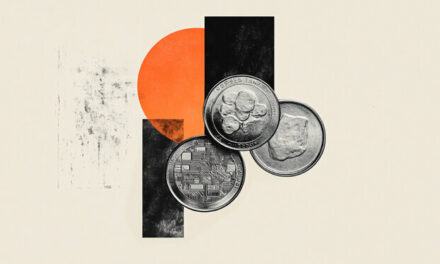Retirement isn’t as easy as it used to be. Against a backdrop of doubts about the sustainability of Social Security, persistent inflation and ever-increasing life expectancy, one question keeps coming up: how much do you need to save for a comfortable retirement?
The new “magic number” for retirement: $1.26 million
According to the latest Northwestern Mutual 2025 study, Americans now estimate that it takes $1.26 million to retire comfortably. A figure down on 2024 ($1.46 million), but still well above the levels of previous years.
This “magic number” obviously varies according to retirement age, place of residence, desired standard of living… but it gives a clear order of magnitude for setting retirement savings goals in Individual Retirement Accounts (IRAs).
When to start saving, and how much?
Here’s how much you’d need to put into your IRA each month to reach $1.26 million by age 65, assuming an average annual return of 7%:
|
Savings starting age |
Monthly amount to save |
Annual amount |
|
20 years |
$330 |
$3,960 |
|
30 years |
$695 |
$8,340 |
|
40 years |
$1,547 |
$18,564 |
|
50 years |
$3,958 |
$47,496 |
These amounts imply strict discipline, no early withdrawals, and regular savings until retirement.
This chart highlights the power of compound interest… but also the cost of delay. Someone who starts at 20 can reach the goal by setting aside less than $4,000 a year.
On the other hand, waiting 10 years doubles the effort. And starting at age 50 requires saving close to $4,000 a month – an amount out of reach for a large majority of households.
This illustrates a fundamental principle of retirement planning: time is your best ally. The sooner you start contributing to your Individual Retirement Account (IRA), the more time your savings will have to grow without additional effort. Conversely, every decade lost requires a doubling or more of your financial effort.
This observation should encourage you to start small, but start early. Because regular discipline and duration often count for more than the absolute amount.
Where to put your savings: The advantage of IRAs
Individual Retirement Accounts (IRAs) are tax-efficient retirement savings vehicles.
Traditional IRAs allow contributions to be deducted from taxable income, while Roth IRAs offer tax exemption on withdrawal, provided certain rules are met.
These accounts can contain stocks, bonds, funds, even gold or real estate, depending on your retirement planning strategy.
For 2025, the annual contribution limit is $7,000 for those under 50, and $8,000 for those 50 and over, thanks to the “catch-up contribution”.
That’s enough for many young savers. But from the age of 30 onwards, as the table above shows, the amounts to be saved already exceed these ceilings. It therefore becomes essential to supplement IRAs with other solutions.
Complementary options include:
- 401(k) plans, often offered by employers, with much higher limits (up to $23,000 in 2025, or $30,500 with catch-up),
- Health Savings Accounts (HSAs), which can also be used partially for retirement.
- Traditional taxable accounts, with a long-term discipline.
The uncertain role of Social Security
A third of Americans wonder: Will Social Security still be there? This concern is particularly strong among Gen Xers (47%) and Millennials (39%), who doubt the system’s solidity between now and their own retirement.
And yet, Social Security remains a mainstay. It often represents 30% to 40% of retirees’ income.
But it’s no longer enough. According to experts, you should aim to replace around 80% of your pre-retirement income, by combining Social Security, personal savings (IRA, 401(k)) and other sources of income.
Americans massively under-save
A quarter of Americans with retirement savings say they are only one year or less ahead in income.
Among Gen Xers, 52% have three years’ income or less saved. And 51% think they might outlive their savings. The reality is far from the ideal.
Working in retirement? A project, or a necessity
Faced with financial uncertainty, 40% of Americans plan to continue working in retirement, especially Millennials (45%) and Gen X (48%).
And for many, it’s not a choice: 56% of Gen Xers say they will have to work for financial reasons.
This illustrates a generational shift. Retirement is no longer synonymous with inactivity, but with a new balance between leisure, personal commitments… and paid work.
Practical tips: How to reach your retirement goal?
Here are a few guidelines to follow:
- Start as early as possible: even small sums have a huge impact thanks to compound interest.
- Use IRA limits every year, and top up with a 401(k) if available.
- Diversify your investments: stocks, bonds, ETFs, precious metals.
- Never touch your retirement savings, except in extreme emergencies.
- Reassess your goals regularly, based on your age, income and changes in retirement legislation.
- Consult a retirement professional or financial advisor to adapt your strategy to your profile, income and objectives.
Planning for retirement: Better sooner than later
Preparing for retirement is a marathon, not a sprint. IRAs offer a powerful framework for building sustainable savings.
But reaching the million or more required for a comfortable retirement requires rigor, consistency, and a real retirement planning strategy.
The earlier you start, the more bearable the effort. And in an uncertain world, it’s better not to bet everything on Social Security.
IRAs FAQs
An IRA (Individual Retirement Account) allows you to make tax-deferred investments to save money and provide financial security when you retire. There are different types of IRAs, the most common being a traditional one – in which contributions may be tax-deductible – and a Roth IRA, a personal savings plan where contributions are not tax deductible but earnings and withdrawals may be tax-free. When you add money to your IRA, this can be invested in a wide range of financial products, usually a portfolio based on bonds, stocks and mutual funds.
Yes. For conventional IRAs, one can get exposure to Gold by investing in Gold-focused securities, such as ETFs. In the case of a self-directed IRA (SDIRA), which offers the possibility of investing in alternative assets, Gold and precious metals are available. In such cases, the investment is based on holding physical Gold (or any other precious metals like Silver, Platinum or Palladium). When investing in a Gold IRA, you don’t keep the physical metal, but a custodian entity does.
They are different products, both designed to help individuals save for retirement. The 401(k) is sponsored by employers and is built by deducting contributions directly from the paycheck, which are usually matched by the employer. Decisions on investment are very limited. An IRA, meanwhile, is a plan that an individual opens with a financial institution and offers more investment options. Both systems are quite similar in terms of taxation as contributions are either made pre-tax or are tax-deductible. You don’t have to choose one or the other: even if you have a 401(k) plan, you may be able to put extra money aside in an IRA
The US Internal Revenue Service (IRS) doesn’t specifically give any requirements regarding minimum contributions to start and deposit in an IRA (it does, however, for conversions and withdrawals). Still, some brokers may require a minimum amount depending on the funds you would like to invest in. On the other hand, the IRS establishes a maximum amount that an individual can contribute to their IRA each year.
Investment volatility is an inherent risk to any portfolio, including an IRA. The more traditional IRAs – based on a portfolio made of stocks, bonds, or mutual funds – is subject to market fluctuations and can lead to potential losses over time. Having said that, IRAs are long-term investments (even over decades), and markets tend to rise beyond short-term corrections. Still, every investor should consider their risk tolerance and choose a portfolio that suits it. Stocks tend to be more volatile than bonds, and assets available in certain self-directed IRAs, such as precious metals or cryptocurrencies, can face extremely high volatility. Diversifying your IRA investments across asset classes, sectors and geographic regions is one way to protect it against market fluctuations that could threaten its health.







